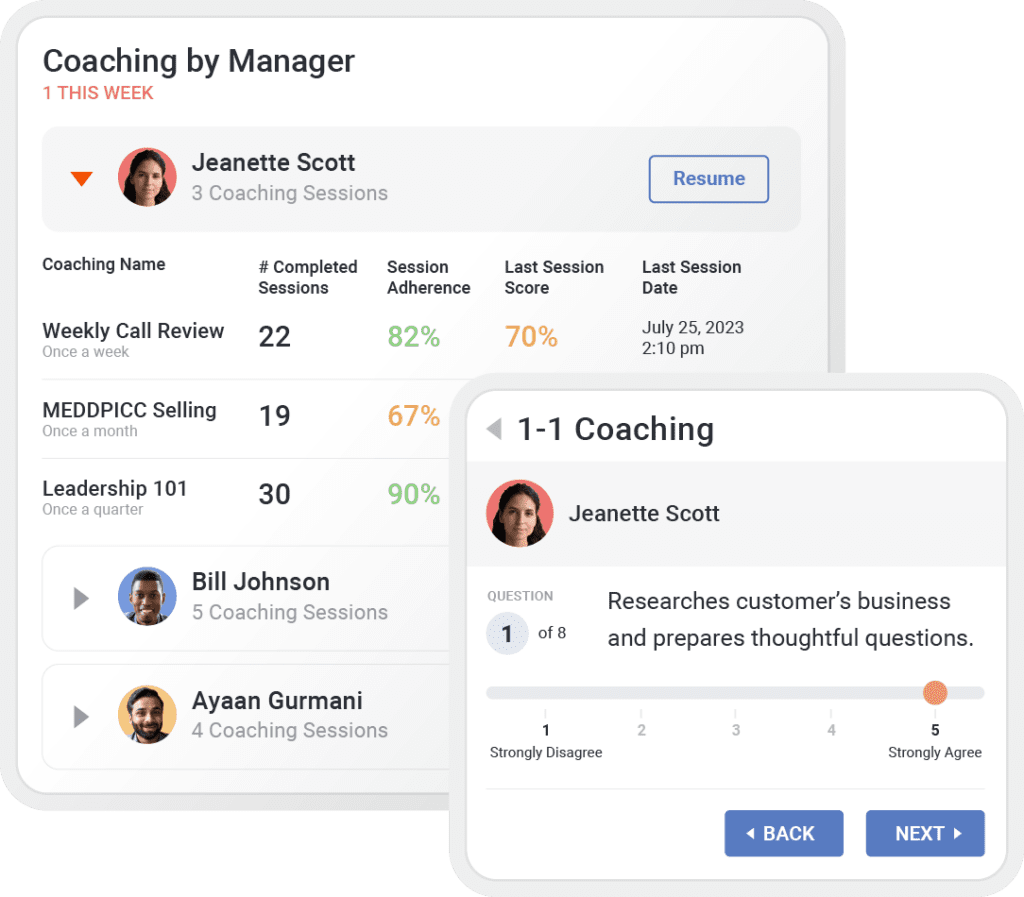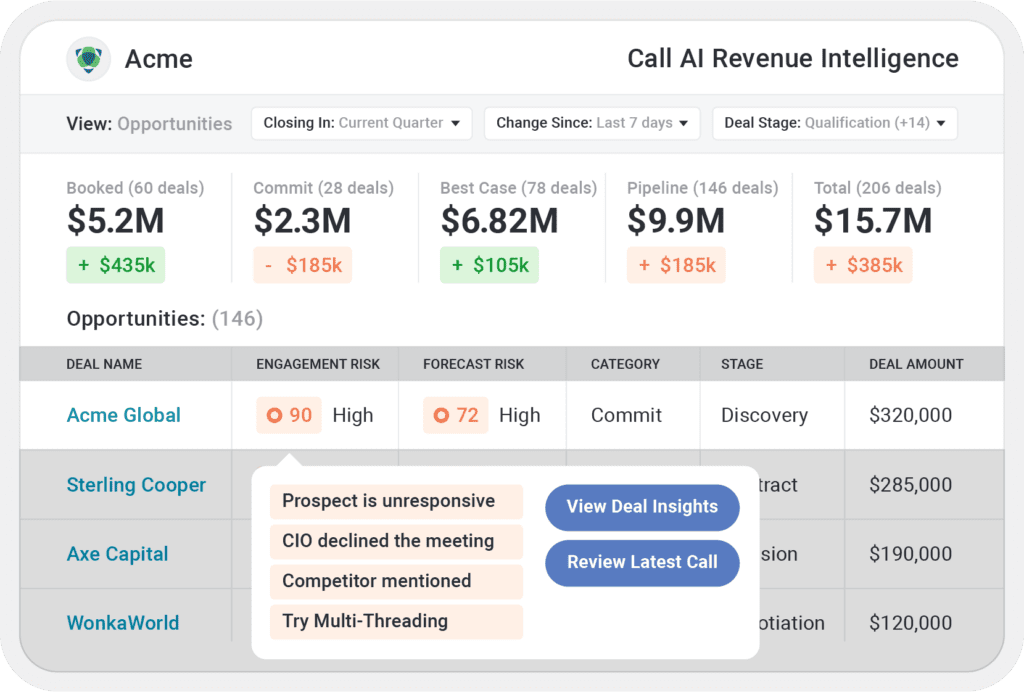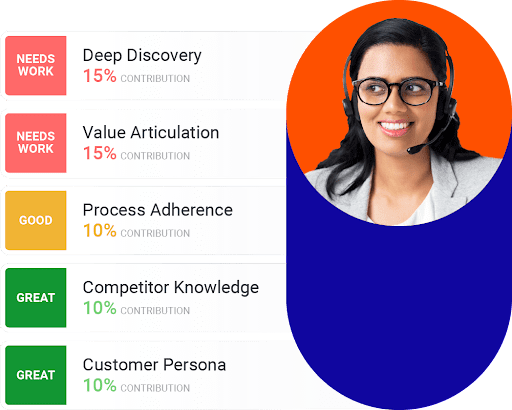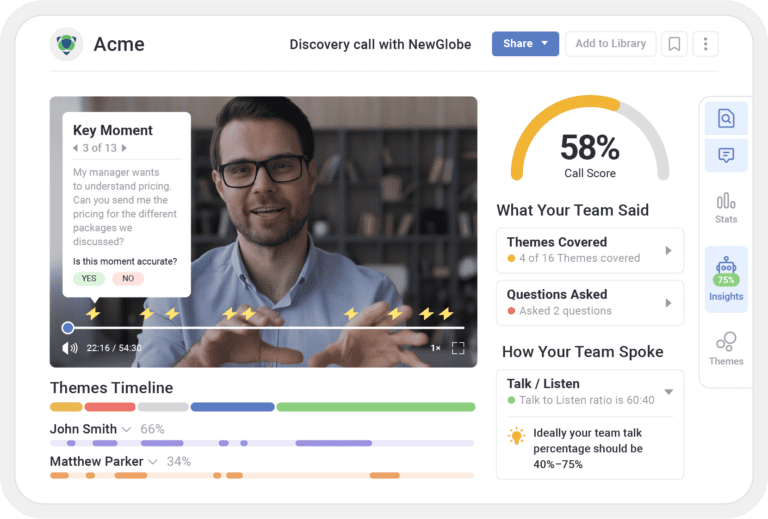6 Steps to a Winning Sales Enablement Program for Med Device Reps
![]() Christian Pieper
on
June 12, 2024
Christian Pieper
on
June 12, 2024
Medical devices and pharmaceutical companies play a critical role in our society. After all, these businesses are laser-focused on developing and delivering products that improve medical outcomes and enhance patients’ health and quality of life.
But the life of a medical device or pharma sales rep isn’t easy. Day in and day out, these sellers must contend with a whole host of unique challenges, including (but not limited to) heavy regulation, crowded marketplaces, and demanding buyers.
Today, winning medical device and pharma businesses are investing in sales enablement. For good reason. With the right sales enablement strategy and tools, med device and pharmaceutical sales reps are equipped to deliver engaging, compliant experiences throughout the purchase journey – and ultimately close more deals.
In this guide, we’ll explore everything you need about sales enablement for medical device reps. You’ll walk away with a clear understanding of:
- What sales enablement for medical devices is
- Why medtech and pharma companies are investing in sales enablement
- 6 practical steps you can take to create a high-performing sales enablement program for your medical device or pharma business
What is sales enablement for medical device reps?
As a revenue leader in the medical technology sector, you’ve likely heard the term “sales enablement.” But what exactly is sales enablement for medical device or pharma reps?
Sales enablement is designed to increase sales reps’ effectiveness and efficiency. It involves equipping revenue teams with the training, tools, information, and compliant sales content to engage buyers throughout the sales cycle.
While sales enablement is a relatively new concept, it’s quickly caught on in all industries – including medical devices and pharmaceuticals. According to the 2024-2025 Chief Revenue + Sales Leader Outlook Report, the vast majority – 84% – of organizations are investing in a sales enablement function.
Sales enablement for medical device reps is an enablement practice focused on addressing the unique needs of sales reps in the medical device industry. Later, we’ll look at some of those unique challenges and how medical device sales enablement addresses them.
You may wonder who is responsible for medical device or pharma sales enablement. It varies from organization to organization. But a dedicated sales enablement team is increasingly tasked with managing sales enablement for health tech.
What is a medical device sales enablement platform?
A sales enablement platform is a tool that powers a sales enablement program. A sales enablement platform centralizes everything related to sales enablement. Sales, marketing, and sales enablement teams can always find what they need – all within one platform.
A medical device or pharmaceutical sales enablement platform is a sales enablement tool equipped to meet the unique needs of medical device and pharmaceutical companies. Think of it as a one-stop shop for everything related to medical device or pharmaceutical sales enablement.
Enablement teams use a medical device sales enablement platform to build and deliver programs and initiatives. These teams can also use the medical sales enablement platform to measure the impact of their programs and optimize accordingly.
Medtech sales reps turn to a medical device sales enablement platform to access everything they need to engage with buyers and close deals in a complex, competitive, and highly regulated industry, including:
- Onboarding
- Ongoing learning
- Reinforcement and practice opportunities
- Coaching
- Compliant sales content
A medical device sales enablement platform also incorporates robust analytics that can fuel better decision-making. For example, a sales enablement platform can help sales reps determine what step to take next or what content to share based on customer engagement and the historic performance of sales content.
Why should you implement sales enablement for medical device sales?
Let’s face it: medical device and pharma sales reps face a lot of challenges. Some key challenges include:
- Navigating a heavily regulated industry with big penalties for non-compliance
- Crowded markets and fierce competition
- Ever-evolving product offerings
- Increasingly large buying committees
- Lengthy enterprise sales cycles
- Shifting sales climate
- Heightened buyer expectations
That’s just to name a few.
The most successful med device companies are turning to sales enablement to ensure medtech sales reps have everything they need to overcome these challenges and close more deals faster.
Let’s examine some of the key reasons leading med tech and pharma organizations are investing in sales enablement teams, plans, and tools.
Alignment between marketing and sales
Sales and marketing teams both aim to close more deals and grow revenue. But often, these teams work in silos. They’re so focused on their own work – without regard to what the other team is doing.
This misalignment can cause big problems.
For example, a marketing team might spend much time and effort creating sales content. But if this content isn’t used by sellers or doesn’t improve sales outcomes, the marketing team is wasting its time. They need hard data and feedback from sales teams to create content that resonates with buyers and helps move them through the sales funnel.
Effective sales enablement requires sales and marketing teams to come together to ensure revenue teams have what they need to be effective and efficient. This alignment is a powerful way to improve outcomes.
Companies with aligned sales and marketing teams experience
Research from Forrester found that companies with aligned sales and marketing teams experience 24% faster growth rates and 27% faster growth over the period of a year.
A single source of truth for compliant information and sales content
The medical device and pharma industries are heavily regulated. Furthermore, medtech and pharma products always evolve, requiring sales collateral updates. Ensuring sales reps always have the latest, greatest, compliant collateral to use with prospects can be challenging.
A sales enablement platform enables organizations to house and organize all sales content in one location. That means sellers can easily find relevant, compliant sales content for any sales scenario. Furthermore, sales enablement teams can easily update content to ensure sales reps have the most current, compliant versions.
Training and coaching that’s relevant to the needs of each seller
It’s well understood that training and coaching both help improve seller performance. But often, organizations take a generic approach to learning and coaching. In other words, they develop generic training and learning initiatives and assign it to all reps – regardless of whether or not it’s relevant.
Training and coaching must be personalized to be effective. Yet, a recent report found that just 40% of C-level executives can identify sales rep strengths and weaknesses for customized training.
A solid sales enablement strategy and the right technology allow enablement teams to understand each seller’s strengths and weaknesses. Then, they can deliver training and coaching that addresses those unique needs.

Engaging buying experiences across the purchase journey
Selling medical devices and pharmaceuticals is getting more and more complicated. Sales cycles are long, and buying committees are growing. Furthermore, each stakeholder involved in a purchase has different needs and challenges.
It can be difficult for medical device and pharma sales reps to keep large buying committees engaged throughout the sales cycle – especially when most interactions take place remotely.
A sales enablement practice ensures that medical device and pharmaceutical sellers have the skills, tools, and content to keep buyers engaged throughout the purchase journey.
For example, some sales enablement platforms incorporate digital sales rooms, enabling all buying and selling team members to align, communicate, and share content. When everyone is on the same page, deals can progress faster.
Data and insights to fuel better sales outcomes
Making decisions based on hunches isn’t an effective approach. Instead, revenue teams must leverage data.
A sales enablement platform can provide robust data and analytics that can be used by sales, marketing, and sales enablement needs. For example, a pharma sales rep can see how different buying committee members interact with a specific piece of content. This intel can help inform next steps.
In addition, some sales enablement platforms incorporate revenue intelligence, which helps medtech sales leaders better predict sales outcomes. If a winnable deal is at risk, sales managers can work with their reps to improve its outcome.

6 steps to develop an impactful sales enablement program
Sales enablement can have a large, positive impact on sales performance. But how can you ensure your sales enablement teams and programs run on all cylinders?
Certain steps are essential when developing a sales enablement program for your medical device or pharmaceutical sales team.
Step 1: Collaborate cross-functionally
It’s important to identify who will own sales enablement within your organization. In the past, sales or marketing often owned sales enablement. But increasingly, organizations are investing in dedicated sales enablement teams.
However, sales enablement teams can’t (and shouldn’t) do it alone. Successful sales enablement requires ongoing collaboration from key teams – including enablement, sales, and marketing. You will likely achieve your sales enablement goals when these key teams are aligned.
Step 2: Determine your sales enablement goals
Without goals, creating effective medtech sales enablement initiatives and measuring their impact is impossible. As such, it’s critical to determine your sales enablement goals. In other words, what do you hope to accomplish with sales enablement for medical device reps?
While setting goals for program adoption and completion are important, you shouldn’t stop there. Instead, be sure you’re setting goals related to how your programs and initiatives will positively impact the metrics that matter most to your business – like quota attainment and revenue generation.
Avoid vague goals like “improve sales performance.” Instead, develop goals following the SMART methodology. SMART sales enablement goals are:
- Specific
- Measurable
- Attainable
- Relevant
- Time-specific
You will also need to decide what medical device sales enablement metrics to track to determine whether you’re on track to achieve your sales enablement goals.
Step 3: Define sales excellence
Sales enablement for medical device reps aims to build a team of excellent performers. But first, you have to define excellence.
Look at your best medtech sales reps and determine what makes them different. Use these insights to develop an ideal rep profile (IRP), which spells out the skills and behaviors a medical device or pharma sales rep needs for success at your organization.

Once you’ve developed your IRP, you can measure each rep against this gold standard. It’s a great way to determine where they’re shining and where there are opportunities for improvement.
Step 4: Develop sales enablement programs to support your goals
Once you have a clear idea of what you hope to achieve with sales enablement, you can start building programs and initiatives to help you achieve those goals.
Among countless other factors, sales enablement initiatives vary widely based on goals, team size, and budget. However, some common initiatives include:
- Sales onboarding
- Ongoing learning opportunities
- Sales content
- Sales certifications
- Role-plays and other practice opportunities
- Deal and skill sales coaching
Step 5: Tap into the right sales enablement technology
Technology is a key component of any sales enablement strategy for medical devices. Today, some organizations use point solutions to address specific aspects of sales enablement. For example, a medical device company may use one tool for sales content, one for sales training, and one for conversation intelligence.
Requiring your teams to switch between tools can be time-consuming and cumbersome. Furthermore, using point solutions makes it nearly impossible to get a holistic view of how sales enablement for medical device reps is actually improving sales outcomes.

Instead, consider streamlining your sales enablement tech stack by leveraging an integrated medical sales enablement solution. An integrated medical sales enablement tool incorporates all the key components of sales enablement – all from one platform. Those key components include:
- Sales onboarding
- Ongoing learning
- Conversation intelligence
- Sales coaching
- Revenue intelligence
An integrated sales enablement platform like Mindtickle empowers enablement teams to create, deliver, and measure their programs – all in one tool. Furthermore, revenue teams can access everything they need to engage prospects and close more deals.
Step 6: Measure and optimize
Launching a sales enablement for a health tech program and hoping for the best isn’t a good approach. Instead, you must measure consistently to ensure you’re on track to achieve your goals. Regular measurement also enables you to identify problems early on. Then, you can optimize your sales enablement programs to improve outcomes.
Build an entire team of top medtech sellers with Mindtickle
Sales reps in the medical device and pharma industries face significant hurdles. A solid sales enablement strategy – paired with the right sales enablement for health tech platform – empowers sellers to overcome challenges, deliver engaging experiences across the entire sales cycle, and close more deals.
Today, some of the world’s best medical device and pharmaceutical companies—including Integrace Health and Janssen India—depend on Mindtickle to equip their revenue teams with the training, tools, content, and insights they need to crush quota consistently.
Sales Enablement for Med Devices
Want to learn more about how Mindtickle enables med device and pharma reps to hit quota every quarter?
Learn More About Mindtickle for Med Devices

